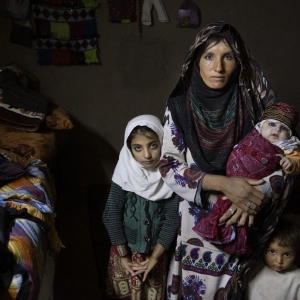Indikatoren in dieser Dimension analysieren, inwieweit Migrantinnen und Migranten hinsichtlich des Zugangs zu grundlegenden sozialen Diensten wie Gesundheit, Bildung und soziale Sicherheit den gleichen Status wie Bürgerinnen und Bürger haben. Es beschreibt die Rechte von Migrantinnen und Migranten auf Familienzusammenführung, Arbeit, Aufenthalt und Staatsbürgerschaft. Die Ratifizierung der wichtigsten internationalen Konventionen fällt ebenfalls in diesen Bereich.main.
Indikatoren in dieser Dimension bewerten die institutionellen, rechtlichen und regulatorischen Rahmenbedingungen der Länder im Zusammenhang mit Migrationspolitik. Dimension 2 beinhaltet auch das Vorhandensein von nationalen Migrationsstrategien, die mit Entwicklungspolitik und -ansätzen im Einklang stehen, sowie die institutionelle Transparenz und Kohärenz in Bezug auf Migrationsmanagement. In diesem Bereich wird auch untersucht, inwieweit Regierungen Migrationsdaten erheben und verwenden.
Diese Dimension konzentriert sich auf die Bemühungen von Ländern, in migrationsbezogenen Fragen mit anderen Staaten und einschlägigen nichstaatlichen Akteuren, einschließlich Organisationen der Zivilgesellschaft und des Privatsektors, zusammenzuarbeiten. Kooperation kann zu Verbesserungen der Regierungsführung führen, indem Standards angeglichen und angehoben, der Dialog intensiviert und Strukturen der Bewältigung von Herausforderungen geschaffen werden.
Diese Dimension umfasst Indikatoren für die Politik der Länder zur Steuerung des sozioökonomischen Wohlergehens von Migrantinnen und Migranten, z.B. die Anerkennung der Bildungs- und Berufsqualifikationen von Migrantinnen und Migranten, Bestimmungen zur Regelung der Studentenmigration und das Bestehen bilateraler Arbeitsabkommen zwischen Ländern. Die Indikatoren konzentrieren sich gleichermaßen auf Maßnahmen und Strategien im Zusammenhang mit dem Engagement der Diasporamitglieder und den grenzüberschreitenden Geldtransfers von Migrantinnen und Migranten
Diese Dimension befasst sich mit der Art und dem Grad der Bereitschaft von Ländern, wenn sie mit Mobilitätsdimensionen von Krisen konfrontiert sind, die entweder mit Katastrophen, der Umwelt und/oder Konflikten zusammenhängen. Die Fragen werden verwendet, um die Prozesse für Staatsangehörige und Ausländer sowohl während als auch Katastrophen zu ermitteln, einschließlich der Frage, ob humanitäre Hilfe für Migrantinnen und Migranten genauso verfügbar ist wir für Bürgerinnen und Bürger.
Diese Dimension analysiert den Ansatz der Länder zum Migrationsmanagement bezüglich Grenzkontroll- und Grenzschutzmaßnahmen, Zulassungsvoraussetzungen für Migranten, Vorbereitung und Flexibilität bei erheblichen und unerwarteten Wanderungsbewegungen sowie die Bekämpfung des Menschenhandels und des Menschenschmuggels von Migrantinnen und Migranten. Es werden auch die Bemühungen und Anreize zur Unterstützung der Integration der zurückkehrenden Staatsbürgerinnen und -burger bewertet.
This local Profile describes examples of well-developed areas of State of Rio Grande do Norte (Brazil)’s governance structures and areas with potential for further development, as evaluated through the six domains of the Migration Governance Indicators (MGI). These address migrants’ rights, a “whole-of-government” approach, partnerships, socioeconomic well-being of migrants, the mobility dimensions of crises, and safe and orderly migration.
Click the icons on the wheel to explore the key findings.
The Migration Governance Indicators (MGI) initiative is a policy-benchmarking programme led by the International Organization for Migration (IOM) and implemented with research and analysis from the Economist Impact. Funding is provided by IOM Member States.
Migration Governance: examples of well-developed areas
- The State Plan for the Care of Refugees, Stateless Persons, and Migrants of Rio Grande do Norte 2021–2024 aims to streamline access to public health services and promote training and awareness on healthcare access for all migrants, regardless of their migration status.
- Migrants in Rio Grande do Norte can access social housing programmes, including the "My House, My Life" programme, if registered on the Unified Registry (Cadastro Único).
- Migrants and refugees can access support services at Brazil’s Social Assistance Reference Centres (Centros de Referência de Assistência Social, CRAS) and Specialized Social Assistance Reference Centres (Centro de Referência Especializado de Assistência Social, CREAS).
- Rio Grande do Norte offers free legal services to migrants through the State Policy for the Care of Refugees, Stateless Persons, and Migrants (PEARAM/RN) (2023) and the Public Defender’s Office (DPE/RN).
- The Department for the Protection of Vulnerable Groups in Rio Grande do Norte addresses xenophobia and racism. The State ran awareness campaigns in 2022 and 2023, and the PEARAM/RN outlines measures to combat hate crimes and discrimination.
Areas with potential for further development
- Establishing orientation programmes for newly arrived migrants is an area with potential for further development.
- The State Secretariat for Women, Youth, Racial Equality, and Human Rights has general child protection measures, but there are no specific state-level measures for unaccompanied or separated migrant children.
Migration Governance: examples of well-developed areas
- The Intersectoral State Committee for the Care of Refugees, Stateless Persons, and Migrants of Rio Grande do Norte (CERAM/RN) is responsible for designing and overseeing local migration policies and strategic plans.
- The State Secretariat of Labour, Housing, and Social Assistance (SETHAS), through the Coordinator of Migration Policy and the Rights of the Elderly (COMIPI), implements migration policies and strategic plans, providing support for CERAM/RN's operations and ensuring migrants' access to public services.
- CERAM/RN and SETHAS coordinate the implementation of migrant services, with CERAM/RN fostering local initiatives and SETHAS overseeing the State Plan for the Care of Refugees, Stateless Persons, and Migrants 2021–2024.
- The State Policy for the Care of Refugees, Stateless Persons, and Migrants (PEARAM/RN) (2023) is gender-responsive and aligns with the State’s development plan: the Multi-year Plan 2024–2027.
Areas with potential for further development
- Establishing an agency or department to coordinate efforts with diaspora groups is an area with potential for development.
- The regular collection and publication by the State of migration data, especially data disaggregated by country of origin, gender, age, and race/ethnicity, is an area with potential for further development.
Migration Governance: examples of well-developed areas
- The State Administration of Rio Grande do Norte engages civil society organizations (CSOs) in migration policy agenda-setting and implementation. The PEARAM/RN (2023) emphasizes collaboration with CSOs, higher education institutions, international organizations, and migrants.
- Migrants’ associations are actively involved in agenda-setting and policy implementation. CERAM/RN includes representatives from the Muslim Charitable Society of Rio Grande do Norte and the Association of Solidarity with Immigrants in Rio Grande do Norte.
- In March 2024, Rio Grande do Norte held its First State Conference on Migration, Refuge, and Statelessness (I COMIGRAR-RN), promoting the participation of migrants and refugees and electing delegates for the Second National Conference on Migration, Refuge, and Statelessness (II COMIGRAR).
- The State of Rio Grande do Norte engages with academia to inform migration policies. CERAM/RN includes a representative from the State University of Rio Grande do Norte and has agreements with the University of São Paulo and FAPERN for training and monitoring migration-related programs.
Areas with potential for further development
- Increasing engagement with the private sector in agenda-setting and implementing migration-related programs and policies is a key area with potential for further development.
- Rio Grande do Norte is not yet part of any international network for knowledge-sharing and best practice exchange on migration issues.
Migration Governance: examples of well-developed areas
- The State Plan for the Care of Refugees, Stateless Persons, and Migrants in Rio Grande do Norte 2021–2024 includes measures to promote gender equality in the labor force, with a focus on migrant women.
- The State Policy for the Care of Refugees, Stateless Persons and Migrants in Rio Grande do Norte (PEARAM/RN) (2023) and the State Plan 2021–2024 promote ethical recruitment of migrant workers.
- Measures are in place to attract international students, including partnerships with academic institutions. The State Plan for Education in Rio Grande do Norte 2015–2025 aims to increase postgraduate enrollments and promote scientific and technological exchange with international institutions.
- The State University of Rio Grande do Norte (UERN) and the Federal University of Rio Grande do Norte (UFRN) have agreements for tuition exemptions and promoting positions for international exchange students and professors.
Areas with potential for further development
- Rio Grande do Norte does not conduct assessments to monitor local labor market demand for immigrants or the effects of emigration on the local labor market.
Migration Governance: examples of well-developed areas
- The State Multirisk Health Plan for Disasters (PEMSD/RN) published in 2022 aims to reduce socioenvironmental vulnerabilities to disasters by establishing guidelines for health sector organization, planning, preparation, and response.
- In 2022, Rio Grande do Norte created a local communication system integrated with the National Secretariat of Protection and Civil Defence (SEDEC) to receive disaster alerts through WhatsApp. Users can send and receive messages and access automated information, hotlines, and other resources.
- Rio Grande do Norte’s Multi-year Plan 2024–2027 (2024) includes programs and objectives related to displaced migrants, such as establishing protection centres for human trafficking and forced labour cases, and developing mapping studies to identify vulnerable and at-risk areas for disasters and displacement.
Areas with potential for further development
- Establishing a disaster risk reduction management strategy with provisions for preventing and addressing the displacement impacts of disasters is an area with potential for further development.
- Rio Grande do Norte has yet to develop contingency plans for managing large-scale population movements during crises.
- Establishing formal coordination agreements and referral systems for assisting migrants during local emergencies is an area with potential for further development.
Migration Governance: examples of well-developed areas
- Rio Grande do Norte has specific mechanisms to foster migrants’ access to justice, including public safety. The Civil Police is responsible for crime prevention and investigation, offering legal advice in person at police stations and through the Virtual Police Station, which is available only in Portuguese.
- Public servants in Rio Grande do Norte are trained in migration rules and migrants’ rights, with a specific budget in the Multi-year Plan 2024–2027 (2024) for annual courses.
- The State Policy for the Care of Refugees, Stateless Persons and Migrants in Rio Grande do Norte (PEARAM/RN) (2023) incorporates the principle of preventing human trafficking of migrants and establishes the state government’s responsibility to actively prevent and report such crimes.
Areas with potential for further development
- Establishing a program focused on facilitating migrant reintegration at the local level is an area with potential for further development in Rio Grande do Norte.
- While local police officers in Rio Grande do Norte receive regular training in human rights, there is no evidence of specific and regular training on migration-related issues.
- Establishing a specific protocol or guidelines to respond to cases of disappearance or death occurring in the process of migration is another area with potential for development. Law No. 11.349 of 2023 introduced the State Educational Campaign on the Disappearance of Children and Adolescents, though it does not address migration-related disappearances or deaths.
2024 Juli




